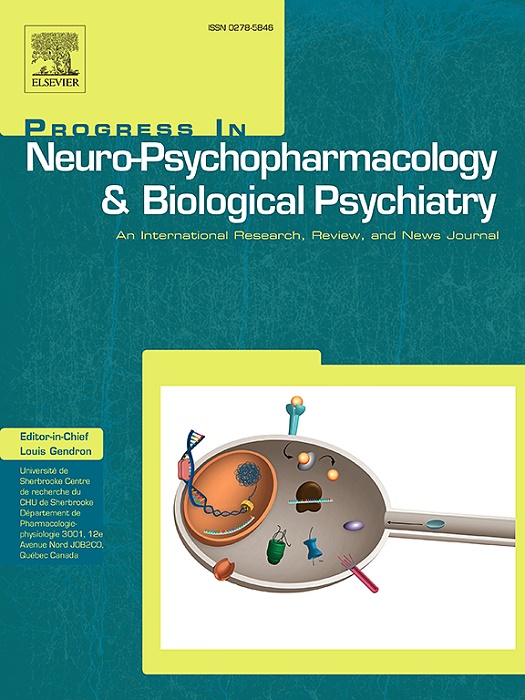Local cortical structure pattern and genetic links in schizophrenia: An MRI and CRISPR/Cas9 study
IF 5.3
2区 医学
Q1 CLINICAL NEUROLOGY
Progress in Neuro-Psychopharmacology & Biological Psychiatry
Pub Date : 2025-01-23
DOI:10.1016/j.pnpbp.2025.111270
引用次数: 0
Abstract
While the etiology of schizophrenia (SZ) remains elusive, its diverse phenotypes suggest the involvement of distinct functional cortical areas, and the heritability of SZ implies the underlying genetic factors. This study aimed to integrate imaging and molecular analyses to elucidate the genetic underpinnings of SZ. We investigated the local cortical structural pattern changes in Brodmann areas (BAs) by calculating the cortical structural pattern index (SPI) using magnetic resonance imaging analysis from 194 individuals with SZ and 330 controls. Significant local structural changes were detected in certain Brodmann areas in symmetric or asymmetric patterns, such as symmetric changes in the BA4 primary motor area and BA23 part of posterior cingulate cortex, and asymmetric changes in the BA13 insula, BA11 inferior orbitofrontal area, and BA 24, and BA 31 cingulate cortex. Following genome-wide association tests, we found genetic variants and SNP-mapped genes and verified the areal preferential expression profiles in the developing human and mouse neocortex. Finally, we performed a loss-of-function analysis using the CRISPR/Cas9 system to investigate the effects of disrupting the SZ-related SNP-mapped Morf4l1, Reep3, or Tmed3 gene on cortical cell fate to understand their roles in generating appropriate composition of cortical neurons. This study outlines a pipeline for identifying local structural changes, associated genetic causes, and potential molecular mechanisms underlying mental disorders. Additionally, these data shed light on establishing a structurally integral cerebral cortex for higher cognitive functions.
求助全文
约1分钟内获得全文
求助全文
来源期刊
CiteScore
12.00
自引率
1.80%
发文量
153
审稿时长
56 days
期刊介绍:
Progress in Neuro-Psychopharmacology & Biological Psychiatry is an international and multidisciplinary journal which aims to ensure the rapid publication of authoritative reviews and research papers dealing with experimental and clinical aspects of neuro-psychopharmacology and biological psychiatry. Issues of the journal are regularly devoted wholly in or in part to a topical subject.
Progress in Neuro-Psychopharmacology & Biological Psychiatry does not publish work on the actions of biological extracts unless the pharmacological active molecular substrate and/or specific receptor binding properties of the extract compounds are elucidated.

 求助内容:
求助内容: 应助结果提醒方式:
应助结果提醒方式:


